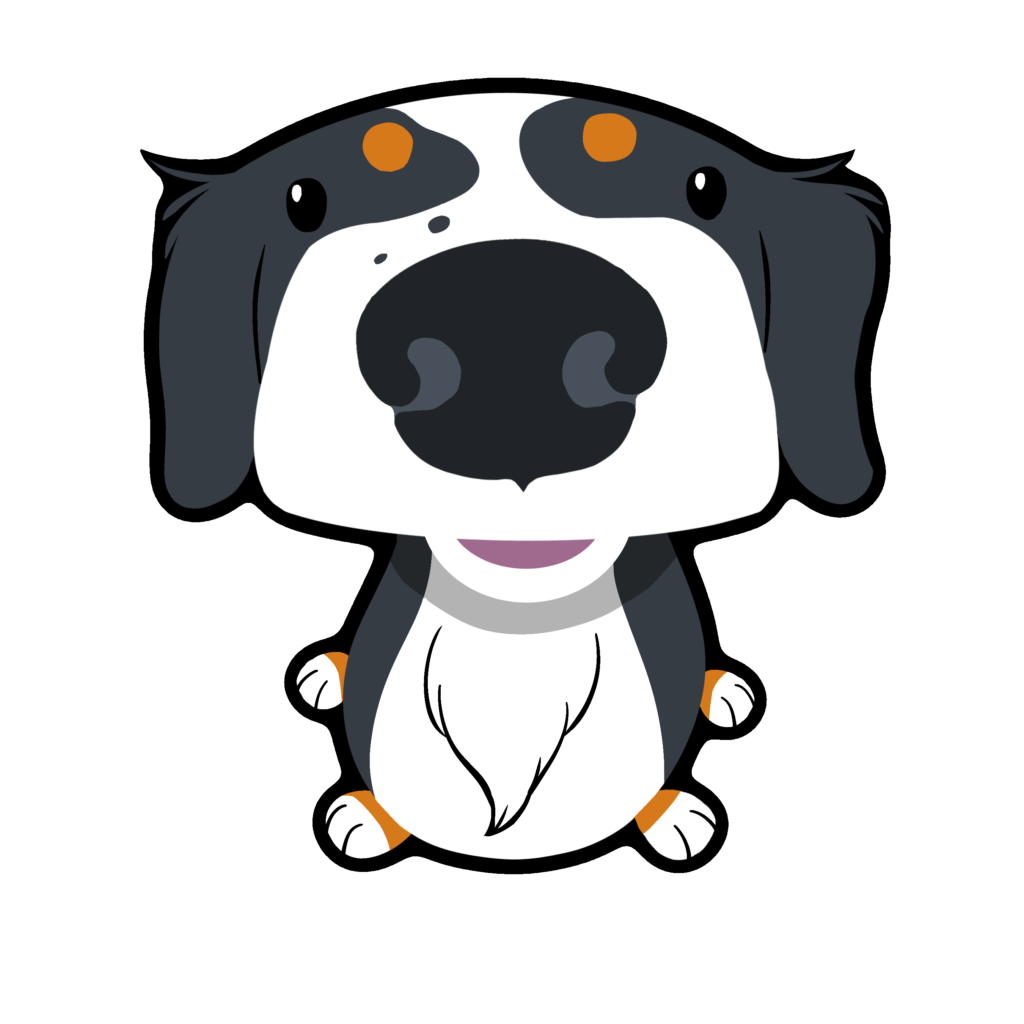
Introduction
Glad to hear it! If you’re like us, you’ll spend, or have already spent, hours researching everything there is to know about the Bernese Mountain Dog (Berner for short). Information about the history, health, physical characteristics, personality traits, and breed standards are all easily gleaned off a multitude of websites and, from that aspect, this blog does the same. However, as BMD owners, we’ve added our personal experience with the breed that will, hopefully, allow you to gain a better understanding of what life is like with a Bernese Mountain Dog.
The Berner is a great breed but they’re not for everybody. They have certain characteristics that weren’t necessarily mentioned during our own research. It wouldn’t have stopped us from bringing our Berner, Molly, into our family but it would have certainly come in handy. I’ll get into all that in a bit but first, let’s start with one of the things that brought you here in the first place….information about the breed.
History
The breed dates back more than 2,000 years during the occupation of the Swiss Alpine area by the Roman Empire. During this period, the Romans brought with them different Mastiff-type breeds known as Molossers. Molossers are large dog breeds used for protection against predators and driving livestock. However, these breeds weren’t well-adapted to colder climates, as indicative of the region, so they were bred with the local Swiss mountain breeds better suited for the local weather conditions. The result was a large, powerful, hardy breed perfectly adapted for the Swiss Alpine climate and topography.
The Bernese Mountain Dog, is one of four Sennenhund (German word for “Mountain Dog”) breeds. The two most well-known are the Greater Swiss Mountain Dog and the Bernese Mountain Dog. Lesser known are the Appenzeller Mountain Dog and the Entlebucher Mountain Dog. Although all four breeds were used as farm dogs for various reasons, the latter two are smaller, more agile breeds primarily used to herd cattle whereas the larger two were used to protect and drive cattle. Although history does not specifically give credit to anyone coining the name “Bernese”, it is, however, attributed to the city of Berne, a city within the Canton of Bern in western Switzerland where the breed was heavily concentrated.
You’ll read conflicting information regarding when the breed was brought to the United States so I won’t claim to know that answer, but it is safe to say that the Berner was brought to America sometime between 1905 and 1936. The American Kennel Club (AKC), however, officially recognized the breed in 1937 and today is a member of the Working Group.

Physical Characteristics
Two things come to mind when describing a Berner from a physical standpoint. They are beautiful with long silky black hair and they are stout. All purebred Berners have the same tri-coloring that is black, white, and rust. Their body, head, tail and legs are primarily black with a white stripe between their eyes and surrounding the nose as well as down their chest and the tips of their paws and tail. Rust is just above their eyes, on their jowl area and lower third of their legs. They are a bit longer than they are tall with males standing 25 to 27.5 inches and females about 23 to 26 inches at the withers. They are broad-chested and have very strong hindquarters and legs. Males can weigh between 90 to 120 pounds while females come in between 70 to 100 pounds. Our Molly is an outlier, she stands at 27 inches and peaked at 115…she’s the Bea Arthur of female Berners! As stated earlier, the BMD was primarily used as a farm working dog but, because they are so strong, they were also used to bring produce, cheese, and milk to the local markets and were even nicknamed “Cheese dogs”. To this day, Berners are trained to pull carts in parades and competitions.

Care
If you don’t care for “sheddy” dogs or there’s someone allergic in the household then the Berner is not for you. These dogs shed, a lot! The good part, if there is a good part about dog shedding, is that they shed in clumps so it’s a little easier to see and there aren’t necessarily these single strands of hair everywhere. Berners shed the most during the two primary shedding seasons of the Fall and Spring so, during these periods, Berners need to be brushed/combed daily. All other periods Berners should be brushed at least twice a week and bathed twice a month, minimum. That said, it’s still a dog hair tumbleweed situation in our house even though we brush her frequently. Seriously, we could knit a Berner pashmina with all the hair we vacuum and sweep up! Their nails grow quickly so you’ll need to keep on top of trimming them….unless you like being eviscerated in your nether regions because Berners like to “Paw” you for attention. Additionally, they can be prone to ear infections, like most drop-eared breeds, so be sure to keep an eye on that and consult your vet should you see redness, irritation, or discharge or you smell a foul odor.
Like any other dog, Berners need exercise. They’re probably not going to play fetch for 30 minutes (or at all for that matter) or win any fastest dog competition but they should be free to run and/or walk at least 30 minutes a day. But be careful. Berners are prone to heat stroke so their physical activity must be closely monitored when outside in warmer weather. Remember, Berners were bred for the extreme climate conditions of the Swiss Alps, not, say, the flatlands of north Texas where we currently reside.
We adopted Molly when we lived in Pennsylvania which reminds me of a story. One February in Pittsburgh, the morning temperature was down in the -20s Fahrenheit. There was snow outside on the ground and ice on the inside of our windows (yes, we needed new windows!). The local news reports were warning people to keep their pets inside as the extreme cold could prove detrimental to animals. Not a problem at our house. We couldn’t get Molly INside! She was too busy making nose trails in the snow. Looked like someone rode a unicycle around the backyard for a half an hour. After suiting-up like I was going on an arctic expedition, I chased her around the backyard for a few minutes, all while my wife laughed and laughed and laughed. Finally, she (the dog, not my wife) had enough of the chase and sprinted into the house. “Stupid dog!” I remember saying as I thawed myself next to the fire. The take away?…Berners are colder weather dogs and will become a snowcanine if you let them.

Temperament
Berners, generally, are good-natured dogs and love to please their owners. They are self-confident, friendly, alert, and willful. When I say willful I actually mean stubborn! Although they are obedient for the most part, it may take some additional persuasion, either verbally or with a treat, to get them to do what you want. They can be good watch dogs but not because they’re aggressive, quite the opposite. They can make good watch dogs because they are big and intimidating. They have deep barks and, although rarely used, it’s enough to stop a person in their tracks if they don’t know any better. They are great with kids and generally accepting of strangers IF they are socialized at a young age. If Berners are kept isolated to just a few family members then they can be aloof and untrusting of strangers. But that’s not our Molly, she’s never met a stranger. She loves everybody especially those who would give her a scruff, which brings me to another point. Berners lean…on you….to get attention. If you don’t maintain a solid footing you can find yourself on the floor getting pawed, climbed on, licked and slobbered on, all with a big smile on your face.
Potential Health Issues
Up to this point the Berner sounds like a great breed, and you’re right. However, like everything, there’s a downside. The life expectancy of Berners is typically 7 to ten years. Bummer, I know. To start with, the gene pool is not huge with Berners. As such, they are prone to certain diseases like hip dysplasia, degenerative myelopathy (hind quarters paralysis), eye retinal atrophy and cataracts, bloat, Von Willebrand’s Disease (improper blood clotting), obesity, and the big one….cancer.
If you’re seriously considering adopting a Berner then do yourself a favor, consult with responsible breeders who screen their dams and sires for their medical history as a means to avoid contributing to the likelihood of their puppies developing these diseases.
Conclusion
If you’ve read our blog “The Story of Molly” you know that, prior to adopting a Bernese Mountain Dog, we were hesitant because of their reduced lifespan. If you’re anything like me, I don’t handle the loss of a pet well. Actually, I turn into a blithering slob for a bit… it’s ugly. Our hesitation subsided after speaking with a Berner owner at the time when she said, “…yes, Berners don’t typically live as long as other breeds, about eight years on average, but it will be the best eight years of your life.”. She was right.



0 Comments